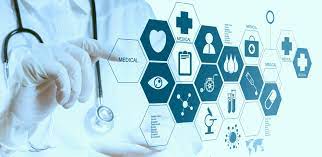Level Seven (HL7) is a collection of data exchange standards that includes file-based transactions and the newer Fast Healthcare interoperability resource (FHIR) protocols based on XML. Through these standards, the data should be structured and the data flow between systems should be smooth. Health organisations that implement standards freely like HL 7 have the necessary resources to share critical operational contents like patient data and information scheduling, allowing automation and more efficient workflows in multi-use environments. The Standards HL7 do not dictate the design of healthcare systems or software but provide a framework for clinical data compilation. According to HL7 International, the specifications are considered the most commonly used in the world.
The HL7 specifications are similar to that used in libraries by Dewey Decimal methods. Librarians are following defined rules on how each title should be consistently represented and classified. Regardless of which library you are in, readers will learn how to find a specific title. In many other areas, the American National Standards Institute often certifies similar standards (ANSI)
How do you apply HL7 and other health criteria?
HL7 specifications are formatted medical information that allows EHRs to connect to systems outside EHRs, which support a number of systems integrations and interoperability.
Integrating the healthcare business is a project designed to enhance the exchange of data between healthcare organisations. IHE supports the use of standards like HL7 and calls for the establishment of programmes to improve healthcare by using these standards.
Further information about FHIR and API
Learn more about interfaces for the HL7 standard applications based on FHIR (APIs).
APIs The (Application Programming Interfaces)
Two applications can share data or “speak” to each one via APIs or interfaces to the application programming. Traditional HL7 specifications are not developed to work in a variety of non-clinical applications, like mobile devices. They use an enterprise interface engine which is not efficient for non-clinical systems, but which is effective in the sharing of data between EHR. The APIs can transform HL7 messages into data formats that other systems can comprehend.
FHIR: FHIR (Fast Healthcare Information)
FHIR is the latest HL7 framework (pronounced “Fire”). FHIR was designed specifically for the internet, in contrast with HL7 standards, but according to HL7 standards. FHIR is a new integration tool that is still being developed. Companies such as Microsoft, Apple, and Cerner have FHIR solutions as a move to build traction in interoperable methods to access patient health data from personal equipment.
Currently, the APIs and FHIR are implemented in line with or above the HL7 standards. In the coming years, they will continue to grow to allow greater data interaction in all healthcare applications.
Are you looking for an example?
Spok is using HL7 integration for drawing information out of various hospital systems, including the EHR, patient care, laboratory, radiology, calling systems and others, to enable mobile devices to alert workflows and communication with the team. This can include anything from a smartphone, tablet, pager, etc.
Challenges of HL7
Also known as the “non-standard standard,” the HL7 specifications. Because the directives are intended to be versatile, they are ultimately different in medical organisations. However, every edition of the HL7 standards resulted in tighter standards, recognising that more stringent rules were needed to improve consistency between organisations. In order to help resolve such problems, the APIs may also be used.
The IHE designs profiles to make them more predictable and legible, adding another layer of policy to HL7 requirements. For instance, these profiles make it possible for patient care systems to integrate “out of the box” with EHRs and communication devices.
HL7 is the future of the long term
In some cases, no single type of integration offers a wide range of resources to meet the health institution’s needs and solutions. In the near future, this will still be the case. We are very much interested in participating in the future discussions on HL7, APIs and FHIR in order to make contact with healthcare smarter and quicker in future.
In fact, I am co-chair of the planning committee of the IHE Patient Care Device Domain. I am also the co-head of this group for the integration profile for warning contact management. Spokes will be a significant part of future FHIR growth by improving HL7 standards with IHE. This allows us to continuously improve the connectivity of our patients with our health community.
About author:
The author is a renowned specialist in medical apps in the United States. He now wants to expand his way of healthcare hl7 healthcare software companies in usa. The author also finds a business called folio3, whose feedback is excellent and whose portfolio is visually attractive, so that the author chooses folio3 as a software development company.
